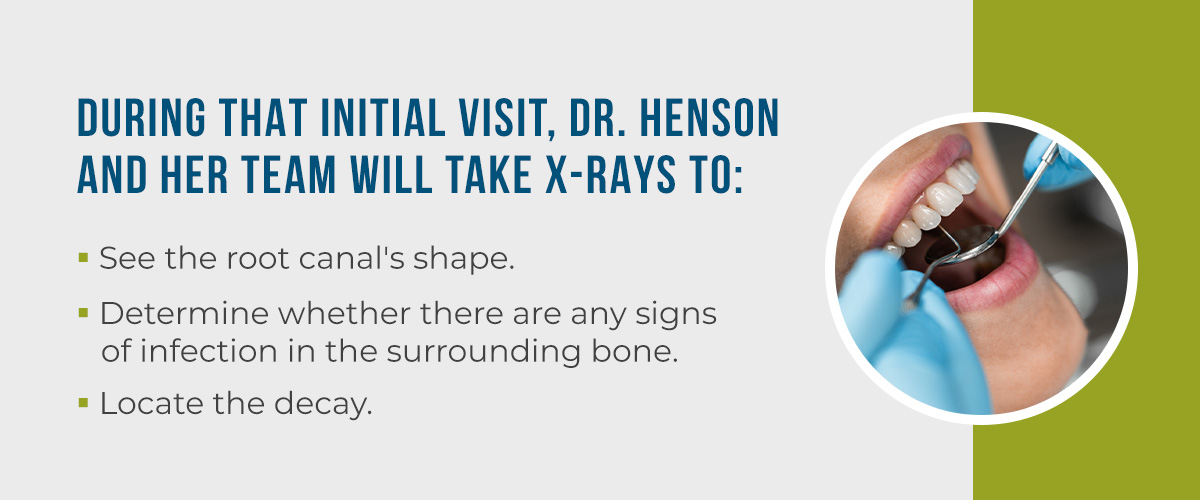Root Canal Treatment: What to Expect
September 25, 2017 7:52 pm
So, you need a root canal. Before you settle into the dentist chair, let’s go over what a root canal is, what you should expect during the procedure and how to care for yourself post-treatment.
What Is a Root Canal?
A root canal is a dental procedure that repairs and saves a tooth that is severely decayed, damaged or infected. During the treatment, the nerves and pulp — the damaged area of the tooth — are removed. The inside of the tooth is thoroughly cleaned and disinfected before it is sealed.
Without treatment, the tissue surrounding the tooth can become infected, and abscesses could form. Dental abscesses are infections that can spread to other areas of the body.
Common Reasons for a Root Canal Treatment
It can be tricky to determine whether you need a root canal procedure. There’s a wide range of reasons a dentist may recommend a root canal, including the following:
- Deep tooth decay
- Infection of the tooth pulp
- Issues with a previous filling or crown
- Cracked or chipped tooth
If you are experiencing severe, persistent tooth and gum pain, sensitivity, or swelling, you may need a root canal. In some cases, these symptoms could be linked to gingivitis or gum disease, which dentists can often treat without a root canal. An expert dentist can perform an X-ray to evaluate the soft pulp tissue of your teeth and determine the best course of treatment.
What Happens During the Procedure?
We briefly touched upon what happens during a root canal procedure, but let’s dive deeper into the entire process.

1. Initial Consultation
Dr. Henson will confirm that you need a root canal after you’ve scheduled an appointment to examine your tooth. During that initial visit, Dr. Henson and her team will take X-rays to:
- See the root canal’s shape.
- Determine whether there are any signs of infection in the surrounding bone.
- Locate the decay.
2. During the Procedure
During your appointment, we will administer local anesthesia to numb the area around the tooth. We’ll place a rubber dam in the area to keep the area dry and saliva-free. Next, we’ll drill an access hole into the tooth so that the pulp, bacteria, decayed nerve tissue and any other debris can be removed from the tooth. We’ll use dental files to scrub and scrape the sides of the root canals before flushing away the debris with water or sodium hypochlorite.
After cleaning the tooth, Dr. Henson and her team will seal it the same day or during a follow-up appointment. Follow-up appointments may be necessary if we need to treat an infection. Once the tooth is ready to be sealed, we’ll fill it with a rubbery substance that acts as a sealant. This substance reinforces the tooth and blocks the root, preventing saliva and food from entering the tooth’s inner structure. We’ll also place a filling in the exterior access hole created at the start of the procedure.
3. After the Procedure
Follow-up appointments help us ensure your tooth is healing properly. Occasionally, we might need to further restore the tooth by placing a crown over the weakened tooth to protect it, prevent it from breaking or restore it to full function.
Pain Management During Root Canal Treatment
Root canals are often associated with intense pain. However, the procedure itself is painless. The local anesthetic completely numbs the affected area and ensures a pain-free experience. Following the procedure, it will take about an hour for the anesthetic to wear off.
As your feeling returns, you might experience soreness in your jaw. This soreness is primarily linked to keeping your mouth open for the duration of the procedure. You may also notice swelling and tenderness in the affected area.
Root canal pain levels in recovery are considered mild to moderate. Fortunately, over-the-counter pain medications can help you manage sensitivity and discomfort. In some cases, Dr. Henson may prescribe stronger pain relievers.
What Is the Recovery for a Root Canal?
For the first few days after the procedure, your tooth may feel sensitive due to inflammation. As mentioned, you can manage this pain with over-the-counter medications. Beyond pain medication, you can use a cold compress to alleviate some of the swelling and tenderness. Sleeping with an elevated pillow can also help relieve throbbing sensations in the gum.
Many patients can return to their normal activities as early as the next day. You will be able to eat and drink as usual, but it’s best to avoid hard foods to prevent bothering the sensitive gum tissue.
It’s important to maintain good oral hygiene following a root canal, so be sure to brush for two minutes with a soft-bristle toothbrush and fluoride toothpaste. You should also floss and use a mouthwash or saltwater solution to rinse after brushing and flossing.
Contact Henson Family Dental to Schedule an Appointment
Root canal treatments can feel intimidating. At Henson Family Dental, we treat each patient with empathy and true understanding. We take time to walk you through the process of a root canal and answer any questions you may have about pain management and recovery.
Contact us online to schedule an appointment or learn more about our dental practice and root canal treatments.

